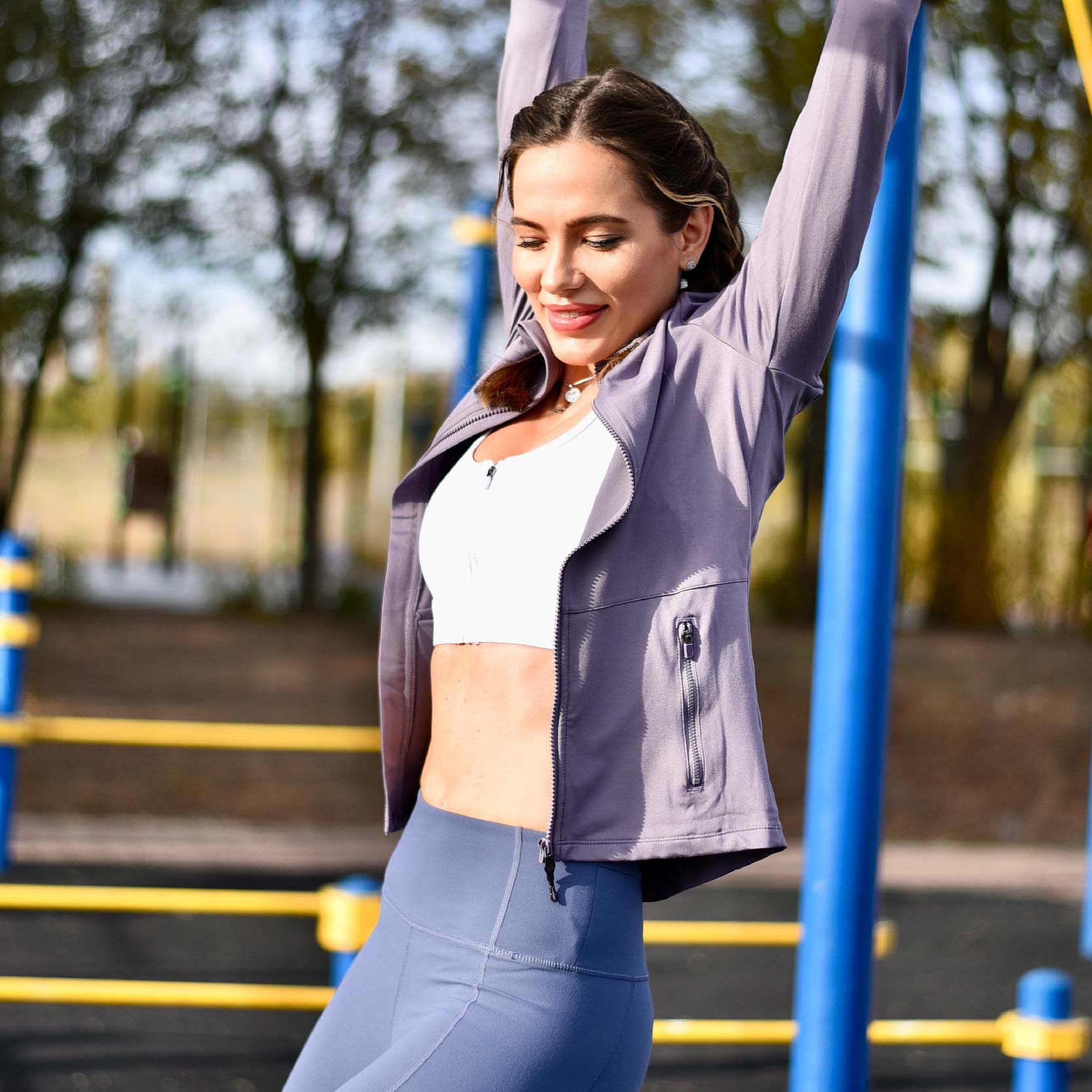Everything You Need To Know About The Difference Between Yoga And Pilates
Yoga and Pilates are two exercises that may help practically everybody. Even though many people compare them, they have significant distinctions. However, both can be beneficial to your health.
So, what's the difference between yoga and Pilates? The primary distinction between the two is that yoga is an exercise that seeks to engage the body with the human spirit and mind. Pilates on the other hand, focuses on building the physical body alongside the mind.
When deciding on the sort of exercise to conduct, you must take several crucial variables into account. Whether you choose yoga or Pilates, it will eventually become an integral part of human life. Therefore, consider the outcomes you want to attain before making this option.

What is Yoga?
Yoga is a form of exercise that connects the human body to the soul and mind. Yoga instructors typically regard the body and mind as one structure. As a result, when you use yoga practices in the proper setting, they may be an effective strategy to repair your physical existence and offer you mental tranquility; this is the primary reason yoga has grown in popularity as a therapeutic exercise. Most importantly, yoga increases your body's mobility and encourages calm regardless of whether you are straining to cross your life's most demanding limits. In summary, many individuals practice yoga as a stress-reduction technique.
Remember that different yoga positions address various objectives and aspirations. Yoga practice does not require any apparatus or support; all you need is a meditation mat or a workout mat.

The Main Types of Yoga
Yoga practices are becoming a part of our daily lives. Yoga practices can cure both physical and emotional issues. As a result, assuming that yoga is exclusive to one faith or society is incorrect.
You may discover several styles of yoga that address various health conditions if you look on the internet. Yoga for chronic problems, yoga to remove stomach fat, yoga practice for losing weight, and even mass development are all examples of therapeutic yoga. Here is a collection of physical poses and respiratory routines that address and stop the problem altogether.
01: Iyengar Yoga
Iyengar yoga is very similar to Vinyasa meditation, and this yoga got its name from B.K.S. Iyengar. B.K is one of the world's top yoga gurus. Iyengar yoga is not like other styles of yogic practice. It centers mostly on balance, physical alignment, and physical openness. Accessories such as meditation slabs and belts do well to refine positions.
According to some research, Iyengar yoga can successfully treat musculoskeletal ailments. One suffers from acute back and neck discomfort in this condition. Furthermore, it demonstrates concrate results in the treatment of spinal impairments. Power, flexibility, and balance are all developed gradually. It also aids in the treatment of gynecological and gastroenterological disorders.
02: Ashtanga Yoga
Ashtanga yoga is very close to the Yoga Sutras of the philosopher Patanjali. The Ashtanga phrase comes from the Sanskrit concept for "eighth."
Fundamentals, self-discipline, yoga poses and practices, breathing, withdrawal, focus, mindfulness, and redemption are the eight principles of Ashtanga yoga.
If you're searching for yoga to help with stress and anxiety, back and shoulder strain, spinal stenosis, or lean mass, Ashtanga is the way to go.
03: Hatha Yoga
Hatha translates as "power." As a result, hatha yoga helps to restore the body's equilibrium. This style of yoga focuses on balancing the chakras and power centers. The chakras are energetic vortexes or locations in the human body where power is centered and are plenty in seven many tisues throughout the body and links to various organs and glands.
Hatha yoga consists of several yoga poses and techniques that help balance the mind and body. Many underlying similarities exist among the many styles of yoga performed by various institutions and instructors.

04: Power Yoga
Ashtanga yoga is the foundation of power yoga. This Yoga technique is effective wh done at a much faster and more dynamic tempo. It serves to strengthen the muscles while also increasing body flexibility.
05: Hot Yoga
Another yoga technique with a much stricter pattern is hot yoga. In hot yoga courses, you will often practice two different sets of 26 postures in 104°F heat.
Hot yoga is also known as Bikram yoga. Many facilities have stopped using this moniker lately since the person who came up with the concept had a law suit against his practices in the court of law. While the heat might be scary, hot yoga practitioners believe it can improve their mood. People who pursue this kind of yoga practice enjoy many advantages of sweating when they exercise.
06: Restorative Yoga
A restorative yoga practice is to help you unwind through the different positions. Props are handy for bodily stability in this type of yoga. Restorative yoga incorporates guided meditation. The primary goal of restorative yoga is to calm the nervous system; this is an excellent technique that deliberately help you de-stress and calm your mind. The goal is to hold each posture for a few moments.
07: Yin Yoga
Yin Yoga combines meditation and meditation. This method promotes flexibility and muscular tone by increasing blood flow in the joints. With discipline, anybody can maintain the same posture for a minimum of up to five minutes. Yin yoga also involves the creative use of materials such as blankets and blocks. Because of its capacity to calm the body's muscles, Yin yoga is healthy for post-workout.

What Is Pilates?
Pilates is a form of exercise that focuses on mental and physical wellbeing. In contrast to Yoga, when practicing Pilates, you may utilize various workout equipment such as the reformer, wunda seat, spinal optimizer, tiny barrels, towers, and so on, in addition to floor exercise.
Pilates generally trains the entire body as well as the mind. When doing Pilates, however, your attention will draw on the center of the body. As a result, the remainder of the body can move from the muscles to the joints. This would be vital because it ensures your mind and body. If you do Pilates, you should strike a balance between flexibility and strength, enabling your slimmer muscles to grow tougher.
What Is The Origin Of Pilates?
The origin of many traditional physical exercises is murky at times. Running, Tai chi, surfing, and meditation all date back to ancient times, and while some evidence exists, the actual origins are obscure. Pilates is a unique experience. The genesis of Pilate is straightforward. It began in the early 1920s and was for therapeutic purposes by fitness therapist Joseph Pilates. Pilates was initially used to rehabilitate troops recovering from war and artists. In the 1920s, Pilates came up with ideas for this type of yoga, and he stayed loyal to its roots to this day, albeit with significant alterations.
Benefits of Yoga
- Yoga is beneficial to both the body and the mind. If you want to find out more information on meditation, ask any yogi or any celebrity devotee.
- Yoga helps to improve body balance, stamina, endurance, agility, and flexibility. Yoga helps with chronic illness, body inflammation and even trains individuals to take a deep breath with their diaphragm, which strengthens your link to your nervous system, and aids with relaxation and metabolism.
- Yoga may help with sadness and anxiety, enhance your brain function and maybe reduce swelling and pain.
- The happy feelings of yoga apply to your mental health as well. Consistent yoga fosters a profound unity of body, mind, and soul. Yoga aids in the development of inner consciousness.
- Yoga has a substantial influence on body wellness. In addition to mindfulness, yoga practitioners had fewer cardiovascular health risks. Lower cholesterol, relaxing heart rate and blood pressure, and insulin levels were discovered by the

Benefits of Pilates
- The mental and physical burn you experience while training is worthwhile for the mental and physical benefits Pilates provides. There's a reason why so many healthy and fit celebrities swear by it.
- It utilizes muscles throughout the body with motions that aid with balance, strength, and flexibility. According to Kingswell, this results in a lower chance of injury. It also helps to correct bad posture.
- Regularly hitting the Pilates mat increases muscle endurance and versatility. In addition, eight weeks of Pilates enhances participants' flexibility.
- After class, you should feel more relaxed and more comfortable. Pilates relaxes the body and the mind while promoting discipline, accuracy, and stability. After each session, you should feel like your physique ready for the day and walk into the remainder of your day feeling aligned.
- There are also data to back up the emotional state impact. Pilates improves consciousness and cognitive focus, resulting in a better mood, a more relaxed sensation, and less tension. Other research indicates that Pilates can help with lower back discomfort.
- If that is your objective, Pilates can aid in weight management. Women who practiced Pilates three to four times per week lost eight inches off their waist and had a lower BMI. It's worth emphasizing that the ladies in the study were already overweight and sedentary.

Yoga and Pilates Similarities
01: Pilates and yoga practice are simple and may need little to no equipment; you may only use a mat and a few other accessories, such as a Pilate band, if desired.
02: They stress breathing techniques or deep breathing into the abdomen and correct breath use during exertion.
03: Both yoga and Pilates require mental focus and can help reduce stress. They can also suit different fitness levels.
04: Yoga and Pilates involve mental attention and can assist with stress management.
The Difference Between Yoga And Pilates
01: Meaning
Yoga practice is a therapy that seeks to restore human physical, cognitive, and spiritual equilibrium. Pilates is a practice that uses special equipment to develop muscular fitness, agility, body posture, and mental awareness.
02: Apparatus
Yoga does not need equipment other than a yoga mat, but Pilates uses various training equipment such as the reformer, wunda armchair, spinal regressor, mini drum, mast, and so on.
03: Mindfulness
Pilates is not a contemplative practice like yoga. As a result, yoga could be a helpful activity for combating mental disorders such as depression or anxiety.
04: Flexibility
Yoga focuses on enhancing body adaptability and muscular strength, while Pilates emphasizes calming the existing tight muscles in the body.
05: Loss of Weight
Yoga and Pilates are beneficial for exercising all major muscle groups, but for health reasons, Pilate routines utilizing various Pilate’s apparatuses are preferable. Pilate exercises will improve your cardiac condition and help you lose extra weight.

Which is better between Pilate and Yoga?
★ Yoga and Pilates are excellent forms of exercise. If you have a medical issue, you should talk to an expert to establish what is best for you.
★ Many kinds of yoga require significant joint strength and flexibility, particularly in the backbone, thighs, and arms. Even though you can adjust yoga postures, a person with discomfort may find it challenging to keep pace in more advanced sessions..
★ Yoga has many styles, including therapeutic meditation, acrobatic breathing exercises, and chair yoga. It is critical to discover what feels comfortable for your body.
★ Pilates can be an excellent exercise for older adults or those recovering from an injury due to its low-impact exercises and subtle movements. There are many forms of Pilates. The main difference between them is the type of equipment used.
★ Many of the same exercises in a mat class are used in equipment-based routine exercise but with more resistance. Mat Pilates is healthy for many people, but it might be more difficult for those with limited mobility or weak core strength.
★ Pilates may be costly, and other versions of Pilates require access to equipment. Pilates, like yoga, may be modified, but appropriate teaching and execution of the movements are critical to avoid injury.

Conclusion
The main difference between Yoga and Pilates is that Yoga emphasizes calmness of the mind and body, whereas Pilates emphasizes strong muscles and physical conditioning. Many young people nowadays see the essence of yoga and Pilates, so there's an altogether new era in society attempting to combine yoga and Pilates into their hectic life.






